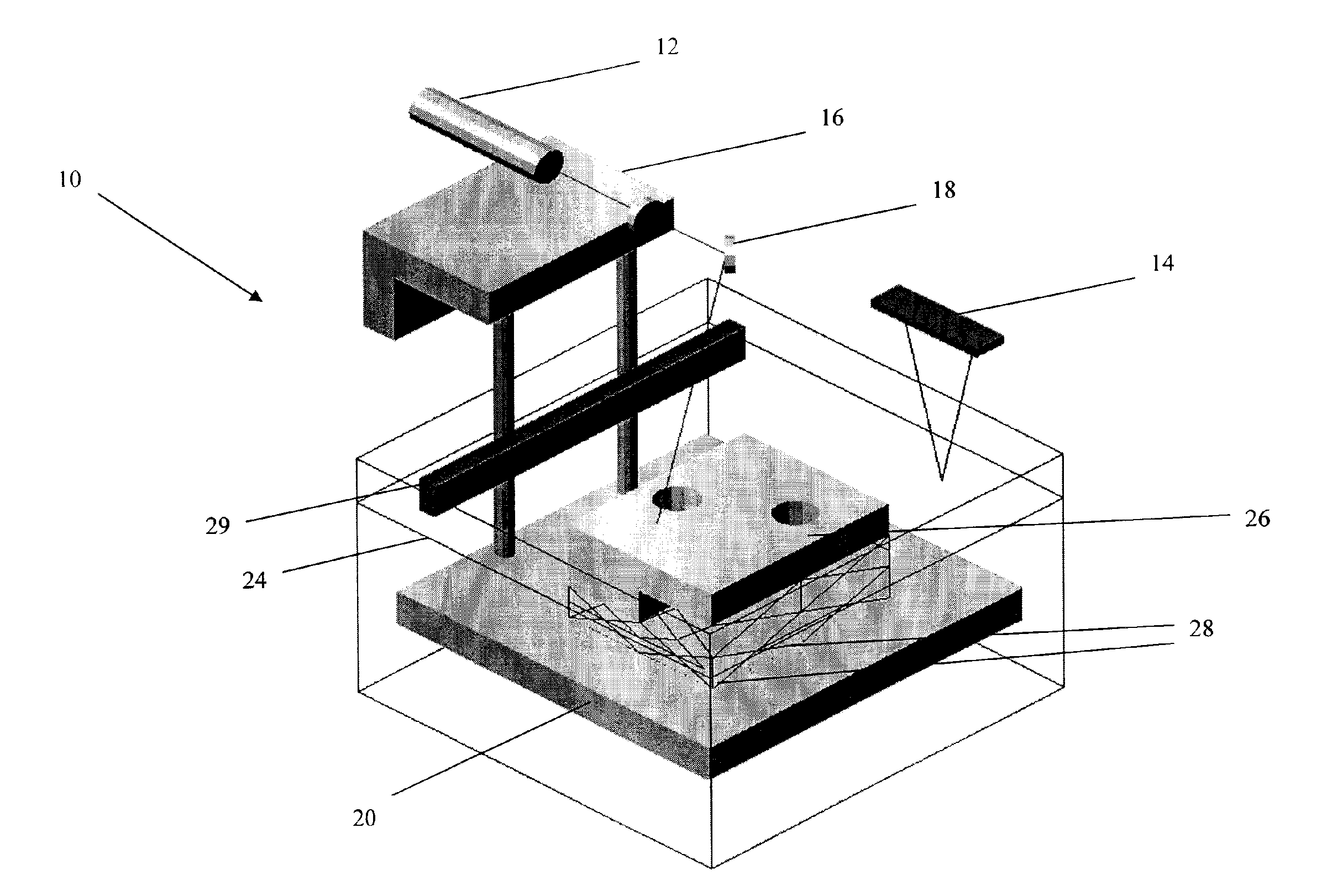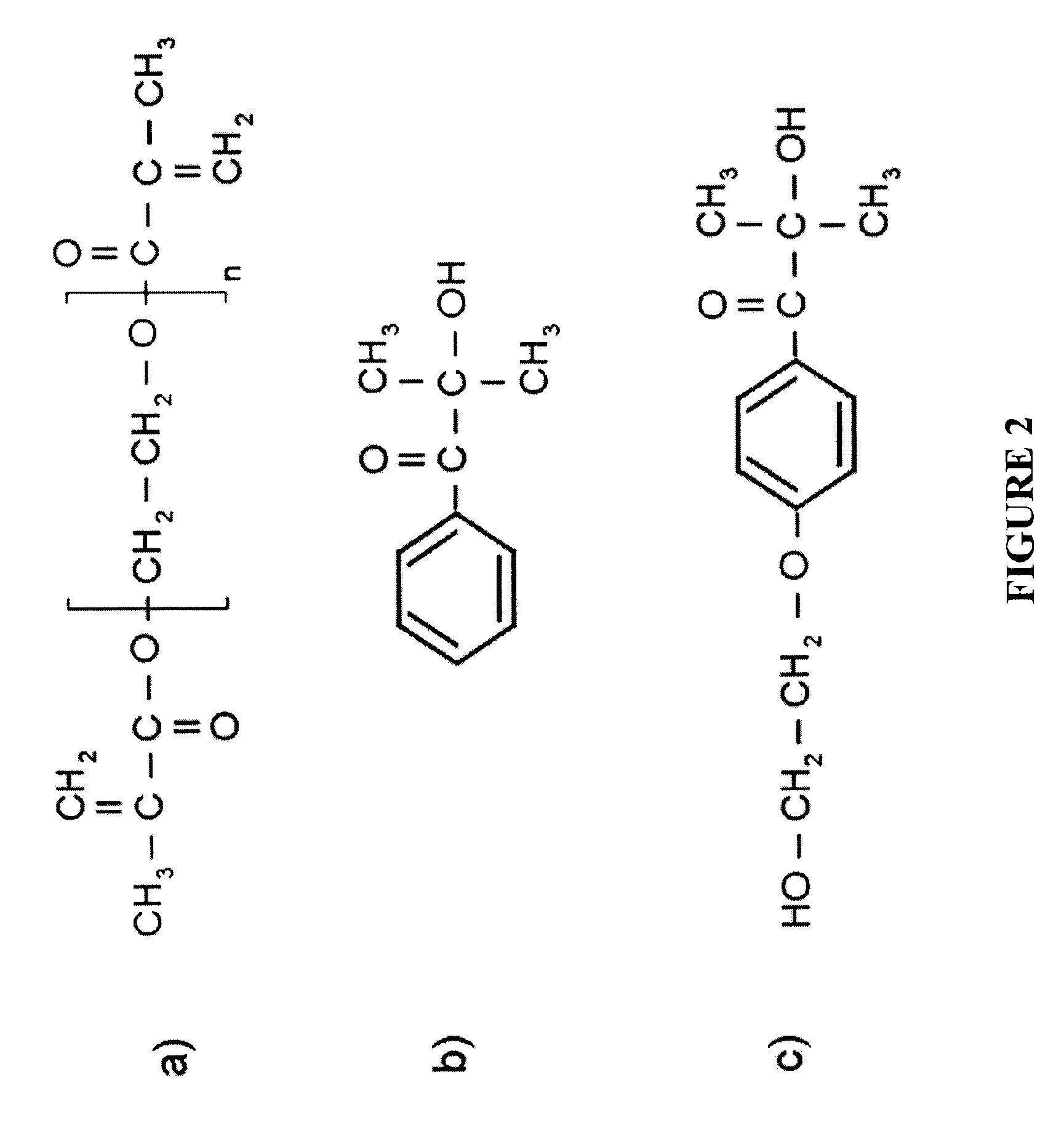Hydrogel constructs using stereolithography
a stereolithography and hydrogel technology, applied in the field of rapid prototyping technology, can solve the problems of insufficient oxygen and nutrients for cell viability, time-consuming and complicated other systems known in the art for creating complex 3d te scaffolds, and achieve the effects of restoring vascular function, promoting adipose tissue population and growth, and improving sl functionality
- Summary
- Abstract
- Description
- Claims
- Application Information
AI Technical Summary
Benefits of technology
Problems solved by technology
Method used
Image
Examples
example
[0051] Poly(ethylene glycol) (PEG) is an example of a synthetic hydrogel material which is cytocompatible and potentially has important uses in tissue regeneration. PEG is generally non-toxic, non-immunogenic and can be easily cleared from the body. In addition, PEG is water soluble and can be easily modified with photoreactive and crosslinkable groups like acrylates or methacrylates. Thus, PEG is ideal for creating photocrosslinkable hydrogel tissue scaffolds. The systems and methods in accordance with an aspect of the present invention make possible, for example, successful fabrication of 3D PEG-based scaffolds using SL.
[0052] Generally, it was found that hydrogel thicknesses vary at select energy dosages for different scan speeds of the SL machine's UV scanning system. In fact, hydrogel thickness was found to be a strong function of PI type and concentration, energy dosage and PEG-dimethacrylate (PEG-dma) concentration (for a molecular weight, Mw, of 1000 PEG-dma commercially av...
PUM
| Property | Measurement | Unit |
|---|---|---|
| Thickness | aaaaa | aaaaa |
| Concentration | aaaaa | aaaaa |
| Molecular weight | aaaaa | aaaaa |
Abstract
Description
Claims
Application Information
 Login to View More
Login to View More - R&D
- Intellectual Property
- Life Sciences
- Materials
- Tech Scout
- Unparalleled Data Quality
- Higher Quality Content
- 60% Fewer Hallucinations
Browse by: Latest US Patents, China's latest patents, Technical Efficacy Thesaurus, Application Domain, Technology Topic, Popular Technical Reports.
© 2025 PatSnap. All rights reserved.Legal|Privacy policy|Modern Slavery Act Transparency Statement|Sitemap|About US| Contact US: help@patsnap.com



